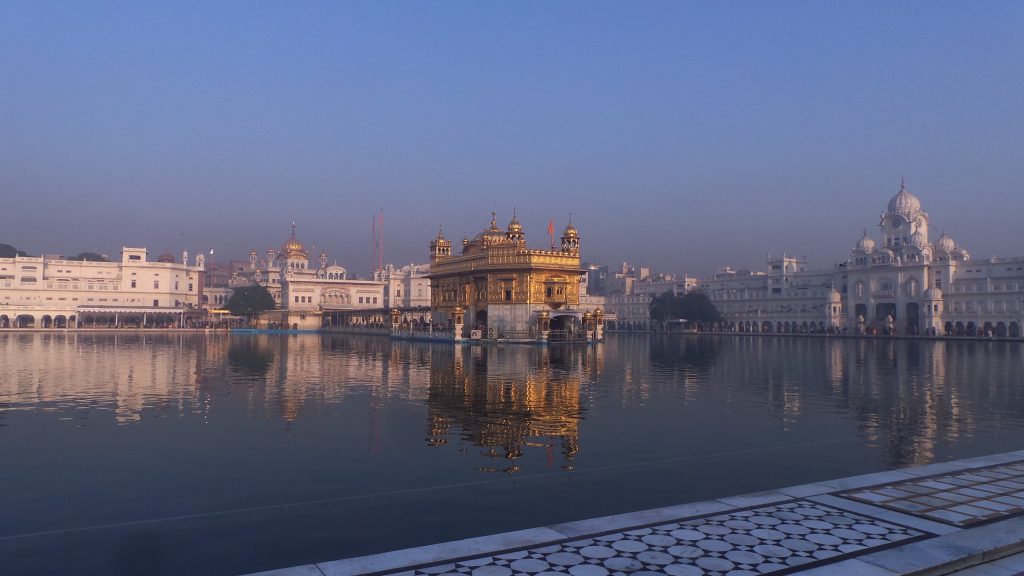
Golden Temple, Amritsar, Punjab, India. Photo courtesy of Jasbir Singh Kang.
Gurdwara, meaning the “gateway to the Guru” is the Sikh House of Worship. The Gurdwara houses the Sri Guru Granth Sahib (the Holy scripture). The person who takes care of the scripture is called a Granthi, and s/he leads devotional services inside the Gurdwara. Both men and women are allowed to serve as granthis, although generally men are selected for leadership roles.
The heart of the Gurdwara is a spacious room that houses the Sri Guru Granth Sahib (Holy Book), which is placed on a small bed with a canopy over it. Here the community gathers to participate in devotional services that include hearing readings from the scripture, as well as explanations about the meaning of the scriptures. The Sikh scripture contains poetry from Guru Nanak (the religion’s founder), other Sikh Gurus, as well as numerous Hindu and Muslim saints. Music forms the heart of Sikh devotional practice. Singing devotional hymns is a core part of Sikh devotional services, and the scriptures contain 3,384 hymns. Services are performed in the Punjabi language, although some gurdwaras in the US include translations into English to help devotees understand the hymns that are composed in an older, formal style of the Punjabi language. During the service, devotees also pay their respects to the holy scripture and then receive divine blessings. The free communal kitchen (Langar Hall) is an essential part of every Gurdwara and a source of pride for the Sikhs, as it embodies two core values of their faith — equality and community service (seva).
Golden Temple
The Golden Temple (or Sri Harimander Sahib) is the holiest Gurdwara. Founded in 1577 in Amritsar, Punjab, the Golden Temple is a place of worship for men and women from all walks of life and all religions. The Langar Hall at the Golden Temple serves 100,000 people each day. Everyone eats together on the floor to show the equality of all of humanity before God. There are also four entrances to the temple (representing the four different directions), symbolizing the openness of the Sikh religion to all people.
